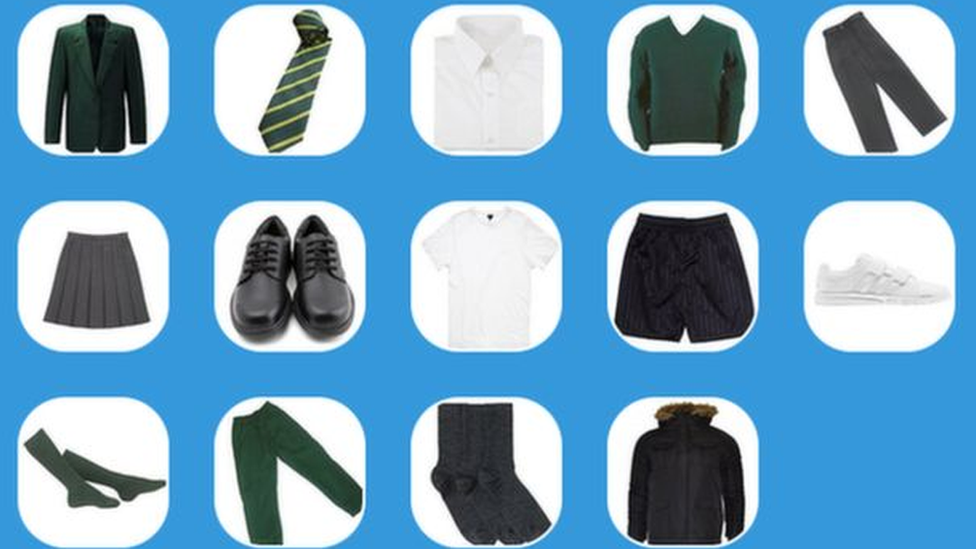Parents on low wages struggling to get school uniform grant
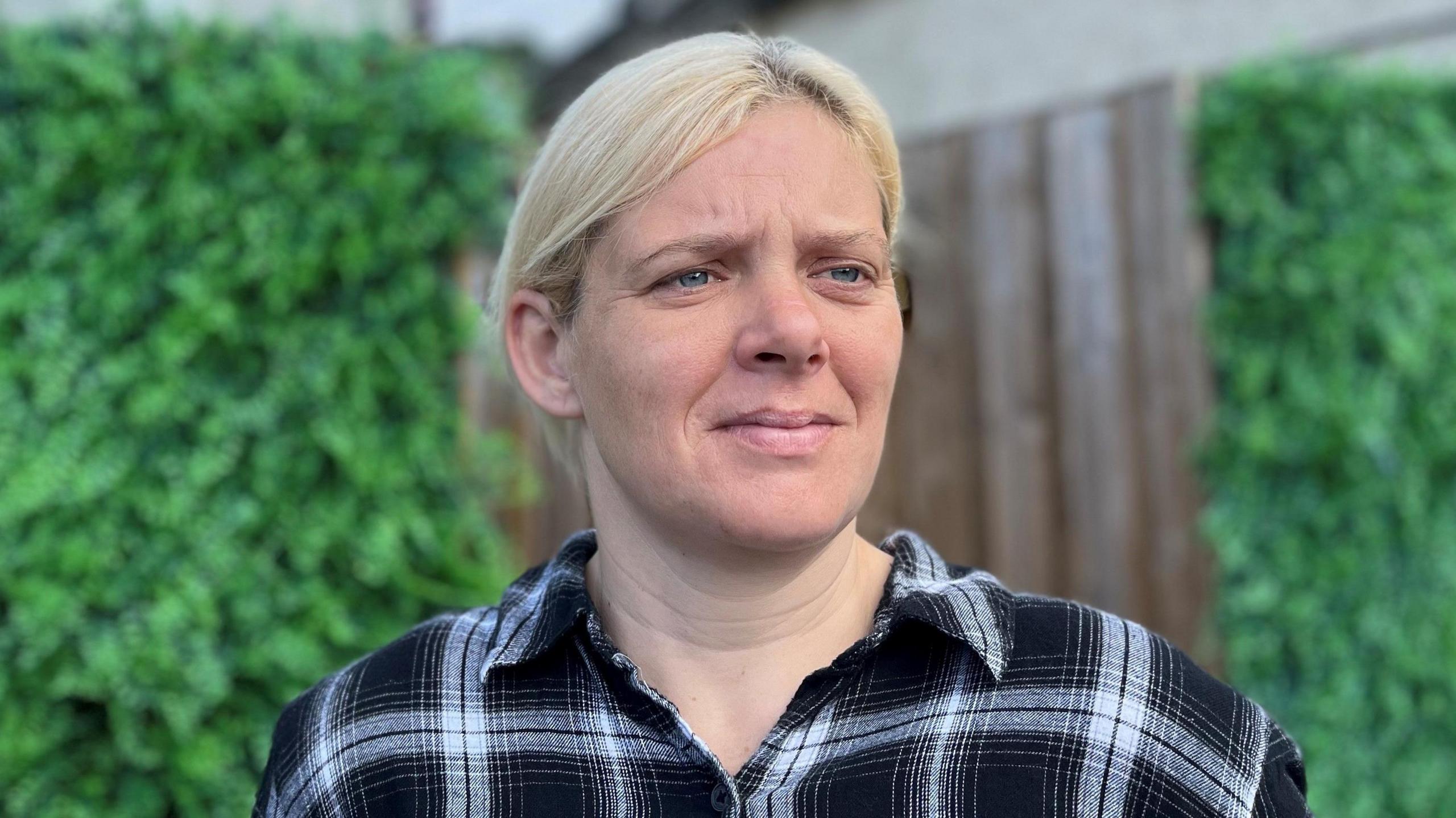
Jen works 22 hours a week in a care home but struggles to cover her bills
- Published
Parents on low wages in parts of Scotland are struggling to access financial support for school uniforms that would be available in other council areas, the BBC has found.
Most of Scotland's councils pay the grant to people on universal credit who earn a salary from employment of less than £850 a month - roughly equal to 16 hours a week at minimum wage.
However, some councils will pay the clothing allowance to people earning as much as twice that amount.
The Child Poverty Action Group is calling for thresholds to be raised across Scotland, saying parents can easily be in poverty and not qualify for the support.

Jen says she spends £450 a year on her son's school clothes
Scottish government guidance says families on low incomes should be able to access a minimum of £120 a year for a primary pupil and £150 for a secondary pupil - figures which have not risen for three years.
But the eligibility for who gets the cash is set by local councils and varies widely across the country.
About 120,000 pupils receive the clothing grant but Jen, a single parent who lives in Balloch with her 10-year-old son, says she is angry and frustrated that she does not qualify.
She works 22 hours a week in a care home but struggles to cover her bills.
However, her salary leaves her above the £933 a month threshold for the school uniform grant set by West Dunbartonshire Council.
Just a few miles up the road in the Stirling Council area, Jen's income would put her well below its £1,851 threshold and she would qualify for the grant.
The majority of Scotland's councils stop the grant when families on Universal Credit have earnings of over £850 a month, the same criteria that is used for free school meals.
But eight councils allow people on much higher incomes to claim the allowance, with some also using council tax rebate or housing benefit as criteria.
Jen says she spends about £450 a year on school uniform and shoes for her son.
"It makes you a bit anxious, of the feeling of how you're going to be able to afford all these clothes, because kids grow dramatically," she says.
"They're one clothes size one minute and then they've just shot right up.
"They can go to school one minute and then they wake up the next day and go, 'oh my shoes don't fit'."
Jen says: "We all want our kids in the best kind of stuff so they're not getting bullied in school."
She says she is angry that by working 22 hours a week she is just over the limit for accessing the grant.
"We are trying to work and better ourselves for our kids and then we aren't getting the help at the end of it," she says.

CPAG's Sara Spencer is calling for thresholds to be raised across Scotland.
Leading campaign organisation, The Child Poverty Action Group (CPAG), is calling for thresholds to be raised across Scotland.
Sara Spencer, CPAG's cost of the school day project manager, said the school uniform grant should be available to all parents on Universal Credit, as the benefit itself is an indicator of low income.
Universal Credit is a paid to those who are out of work or on low incomes - 37% of recipients across the UK are in employment.
"It would make it more fair and consistent across the country and most importantly it would mean that more children on low incomes would be receiving this vital support," Ms Spencer said.
"Parents tell us that uniform is a really difficult and a big cost for them, especially in larger families where you've got uniform to buy for lots of children."
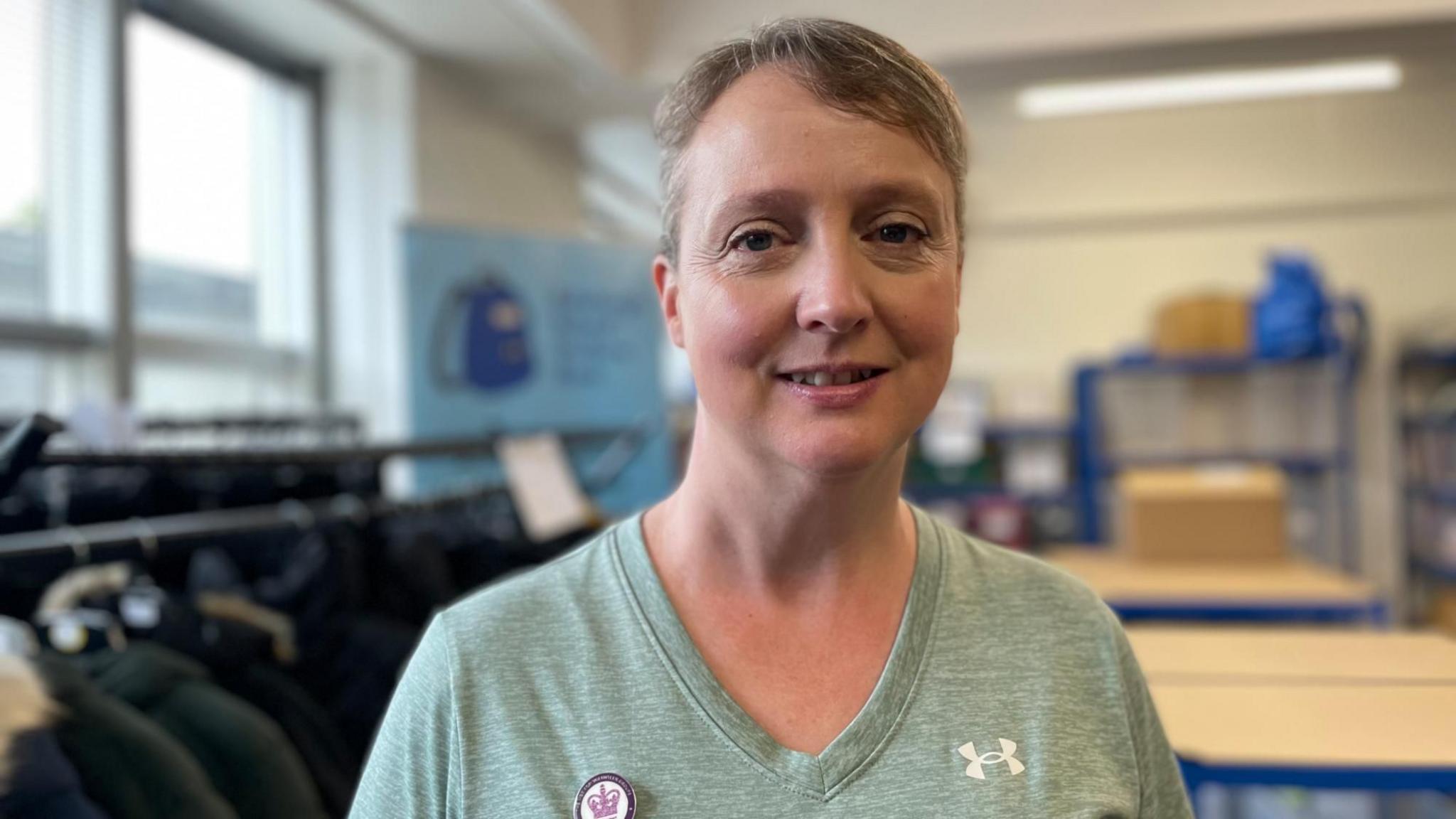
Julia Grindley says many people in poverty are not eligible for state support
Julia Grindley, of the Edinburgh uniform bank charity, says she sees many people who are in poverty who end up at her door because they are not eligible for state support.
"About 40% of children who are referred to us for a clothing crisis pack are not eligible for the School Clothing Grant even though they are living in poverty," she said.
"Many of those have one or two parents who are working.
"If they earn just £10 over the threshold they can actually end up worse off than families that are not working.
"It's very frustrating that families have to come to us because they can't access things that they really should be eligible for."
School funding grant
In 2018 the then education secretary John Swinney announced reforms to the school clothing grant saying it would "remove the stress and stigma which can often be associated with struggling to afford essential school items".
But councils set very different thresholds for those on universal credit to receive an award.
A West Dunbartonshire Council spokeswoman said: "We are committed to supporting low-income families and our threshold for eligibility for a school clothing grant is more generous than the offer in 70% of other authority areas across Scotland."
The Scottish government said it had provided funding of £14.2m for the school funding grant this year.
A spokesman said: "Our funding helped to create a national grant level which provides eligible families with at least £120 to help with the cost of clothing for school for each child.
"Local authorities are responsible for the administration and distribution of this grant.
"We are aware that local authorities apply differing eligibility criteria and would encourage synergies so that families on similar income levels in different areas are treated fairly."
Last year, the Scottish government published guidelines on how to make uniforms more accessible and affordable.
They said schools should use generic items and colours that could be bought from a range of suppliers, promote uptake of the school clothing grant and ensure branded items are not encouraged.
What's the solution?

The pupils at West Calder asked for comfort and style
West Calder High School in West Lothian has completely re-designed its uniform to make it more affordable and accessible.
The school asked pupils and the local community what they wanted to wear, in line with the new government guidance.
The pupils asked for comfort and style and opted for a T-shirt and hoodie rather than a blazer and tie.
Older pupils still wanted a shirt and blazer to differentiate them from young pupils but all the items are available through the school to cut the cost.
Head teacher Gerry Higgins said the school now buys the basic uniform in bulk and sells a full uniform to parents for £10.
He said a traditional uniform with shirt and tie would cost £56.
"You will have young people who will deliberately not come into school because of the cost of the school day," he said.
"It might be that they don't realise that is the reason but they cannot afford to look the same as other young people."
Related topics
- Published12 September 2024
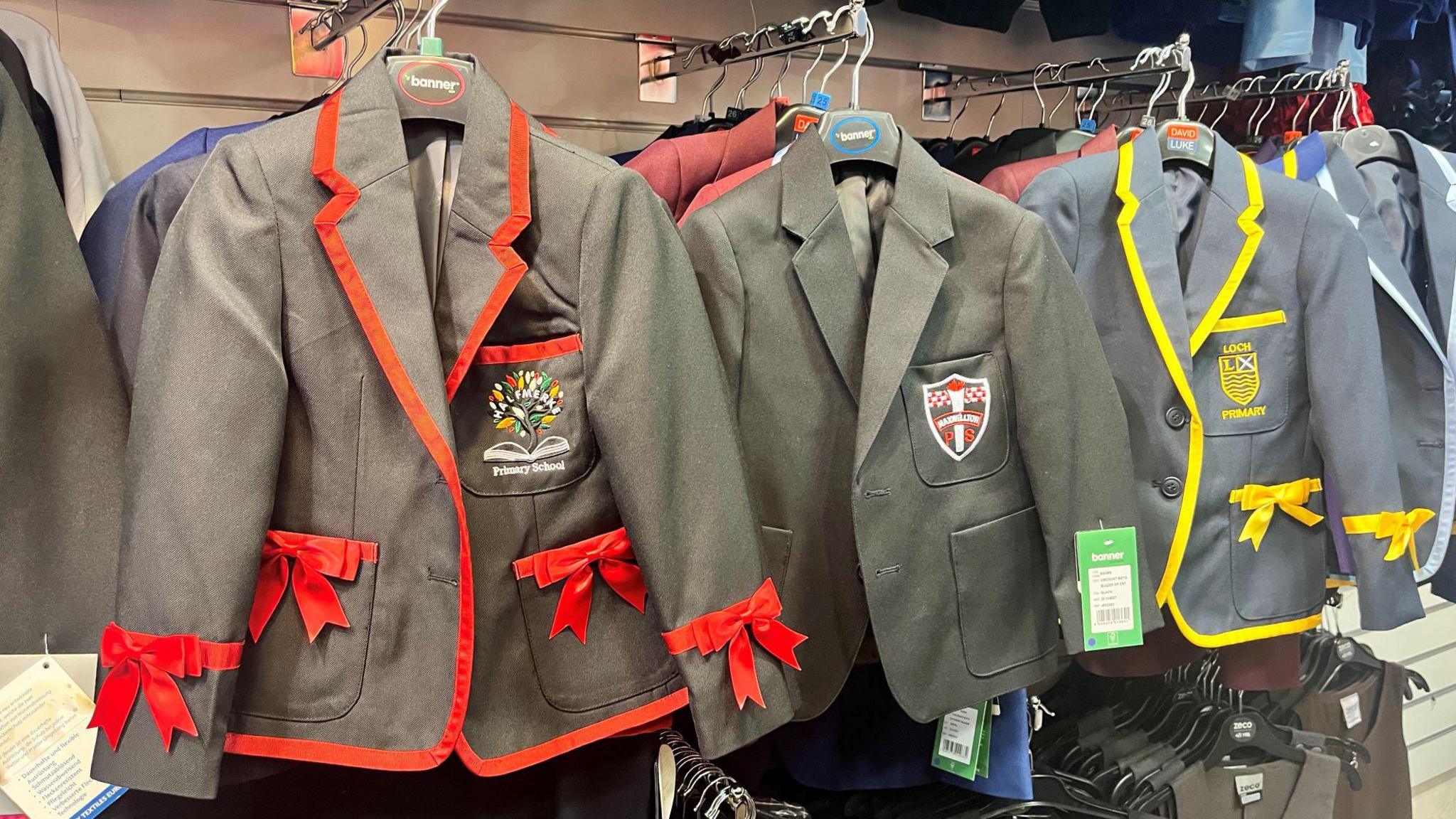
- Published6 August
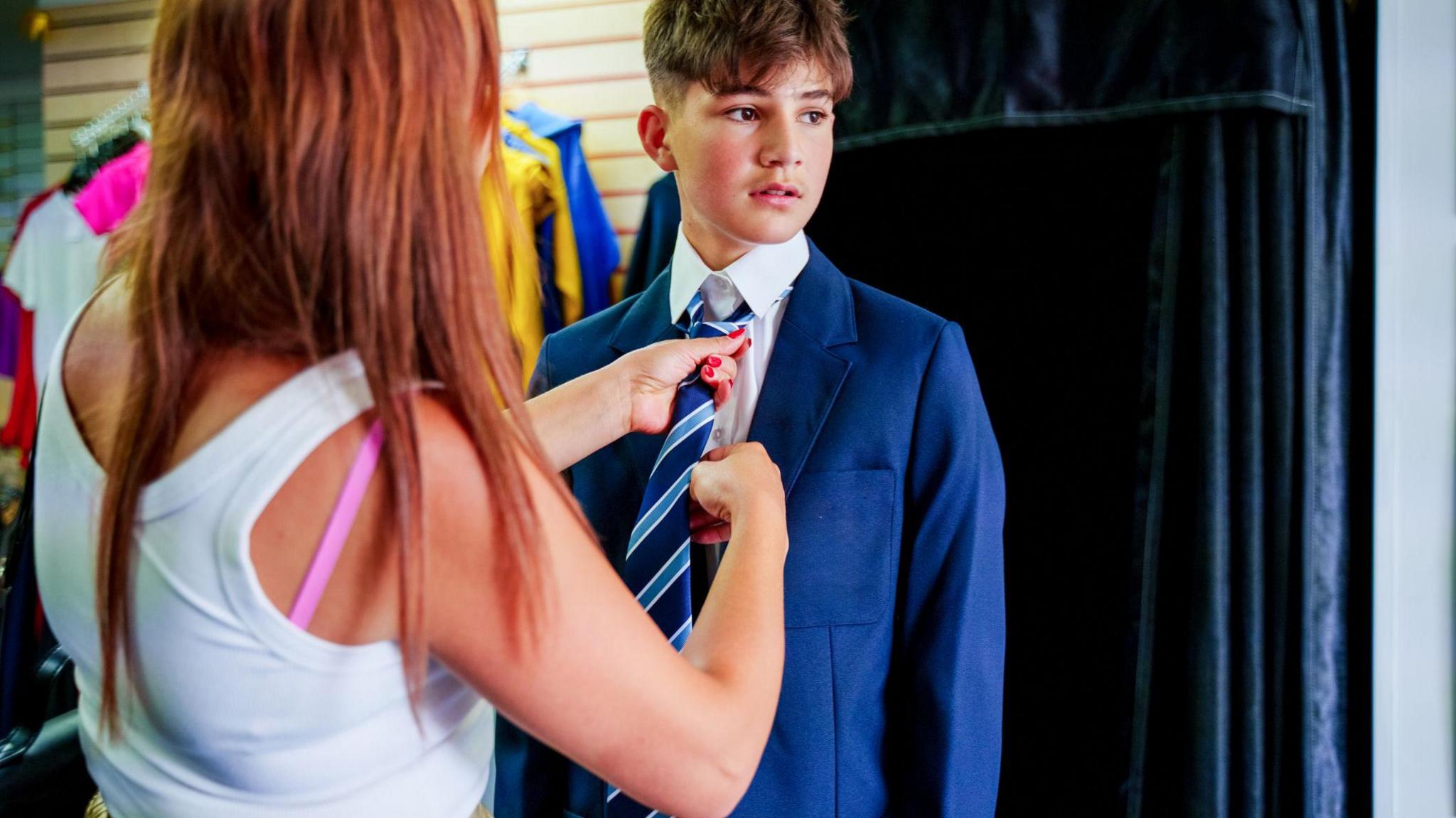
- Published25 May 2018
